READY TO GET STARTED?
REQUEST A FREE ESTIMATE
Fill out the form below or call (888) 466-7849 for a free, no-obligation estimate.
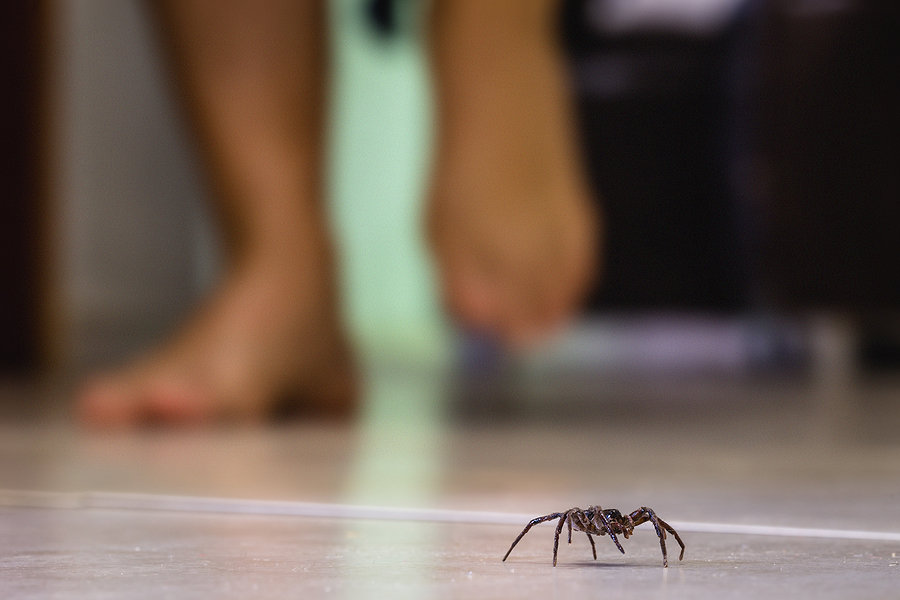
Spider sightings tend to increase when the weather cools off. While most spiders prefer to live outdoors, a few will make their way inside in search of food and water. Most spider species also mate in the fall, increasing the numbers we see as they go in search of their partner. Young spiders are born in the spring, taking the summer to grow and mature. By fall they are bigger, venturing out and starting to build their webs. All of these factors combine to increase the number of spider sightings we see near the end of the year.
There are many types of spiders common to this area, some venomous but most harmless. Here are 9 of the most common spiders in Georgia to look out for this fall.
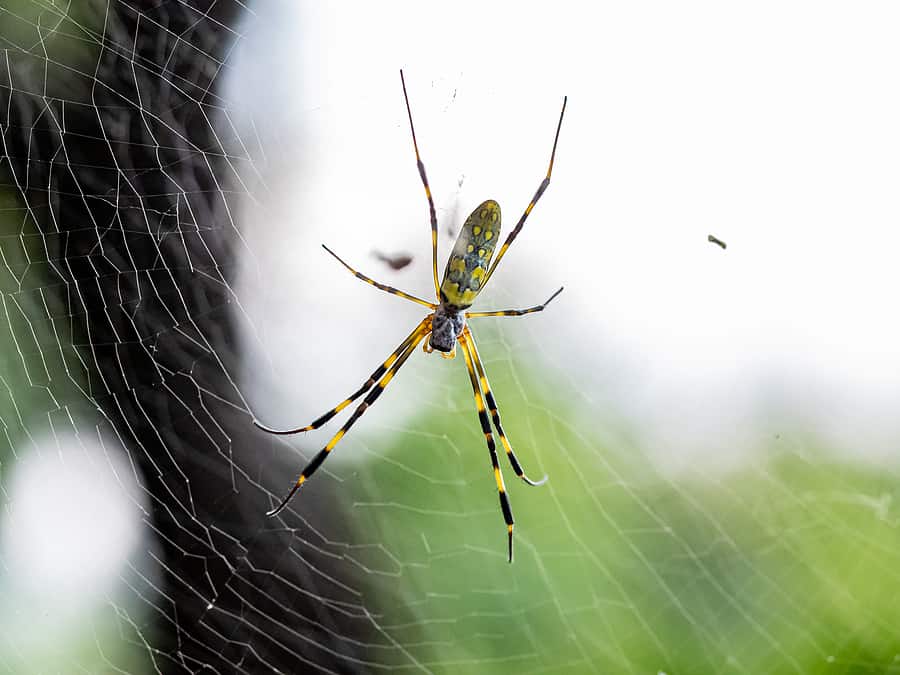
Joro spiders are a non-native species originating in Asia that were first spotted in Georgia in 2014. Since then they have started to expand their population throughout the southeastern United States. Joro spider eggs hatch in late spring, with sightings as early as May. They will build their webs anywhere they can find, including decks, porches, houses, plants, landscaping, etc. They are larger than most other spider species in the US. Females can measure up to 4″ in length with males only reaching about 1/4″ in size. Their colors vary – males are usually brown while females can be blue-gray or yellow with red markings on their abdomen and black legs with yellow bands. They are commonly found on the edges of woods and around homes. They are not usually seen indoors and their bites are rare. There is no research to show that Joro spiders are dangerous to humans.

The black widow is one of the few structure-invading species of spiders in our area. Their fangs are big enough to penetrate human skin and their venom is powerful enough to cause side effects in humans. In fact, they are the most venomous spider in North America. Antivenom for their bites does exist. Female black widows grow to lengths of 3/4″ while males are about half that size. They are one of the easiest types of spiders to spot with black bodies and distinctive red hourglass markings on the underside of their abdomen. They have very round body shapes. These spiders can be found indoors and outdoors, preferring protected, sheltered areas to live in. They are most active at night, spinning webs to catch their prey in. Outside they can be found around decks, in barns and outbuildings, under rocks, or in woodpiles. Inside they can usually be found in areas that aren’t disturbed or used frequently, such as garages, basements, closets, and crawlspaces.
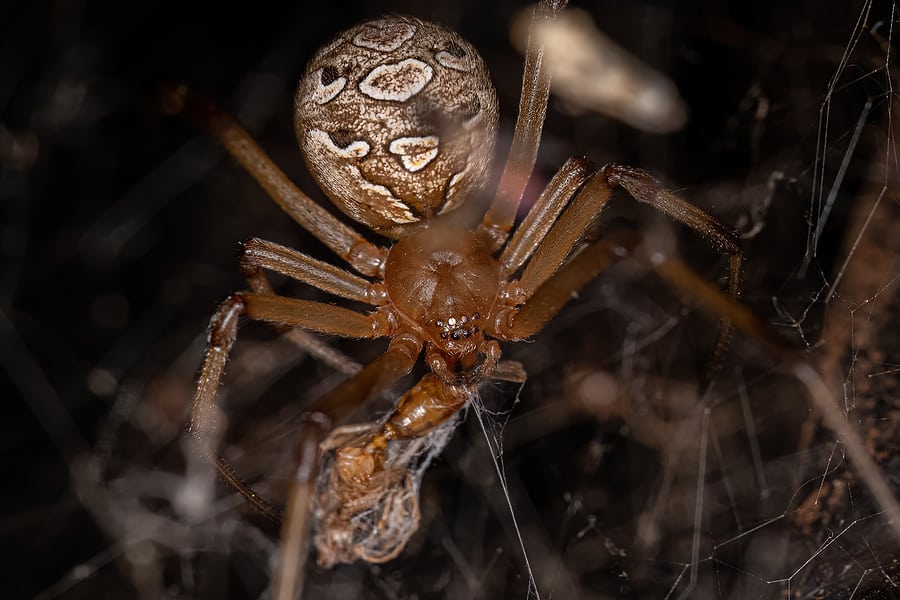
Brown widow spiders are another non-native species, although can now be found throughout the southern and western United States. Bites from the brown widow aren’t as potent as those from their black widow cousins and don’t cause nearly as bad of side effects. Only brown widow spiders bite. Brown widows also prefer undisturbed areas to live in but can often be found in garages and basements, gardens, on patio furniture, on mailboxes, on outdoor toys, and in storage closets. Female brown widows grow to about 1/2″ long while males are about half this size. Both males and females are brown in color with tan and black legs. They also have the hourglass marking like black widows, but theirs are orange in color.
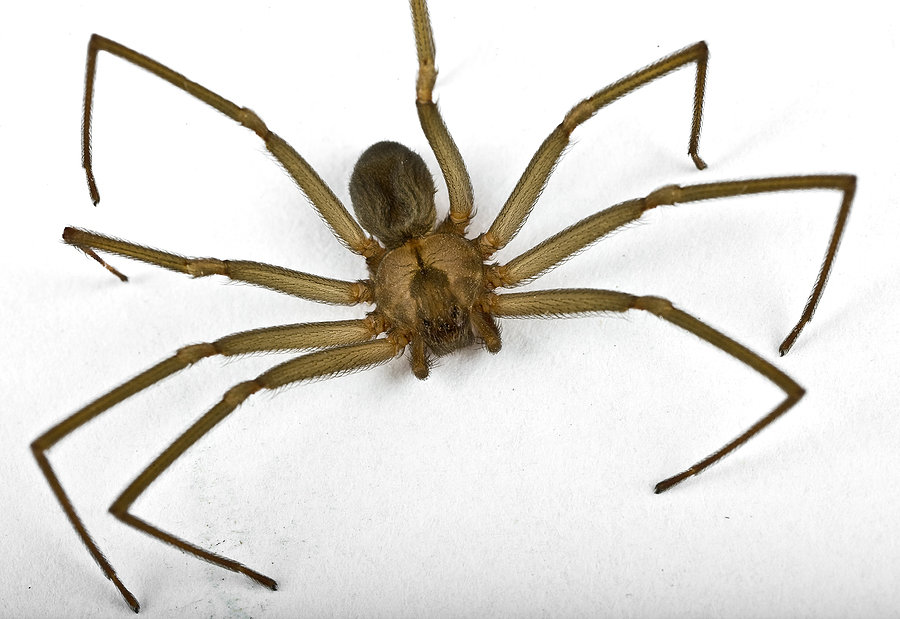
Brown recluse spiders are commonly found in the southeastern and midwestern United States. They are also easily identifiable by the distinctive markings found on their bodies. These spiders are known for “secretive” behaviors, preferring to hide in warm, dark, dry habitats. They are commonly found in woodpiles, basements, and closets, especially in old shoes that aren’t worn often. They will bite, with symptoms taking up to 3 hours to show up afterwards. Brown recluses range from 1/4″ to 1/2″ in length. They are tan to dark brown in color with a dark fiddle-shaped marking on their back.

Wolf spiders are another common species you may see this fall. These spiders don’t use webs to catch prey; instead they hunt their prey, utilizing their speed to catch them. There are over 100 species in the US and Canada. Female wolf spiders grow from 3/8″ to 1-3/8″ in length while males range from 1/4″ to 3/4″. They are usually dark brown or yellow with striped markings on their legs. They are also very hairy. Wolf spiders hunt at night and hide out during the day. Once inside, they usually stay at lower levels and are often spotted in the floor along walls and under furniture. Outside they are found in woodpiles, under rocks, and other sheltered areas of landscaping. They can be beneficial to have around because they eat other pests that can cause problems around your home. They can bite but it is extremely rare.
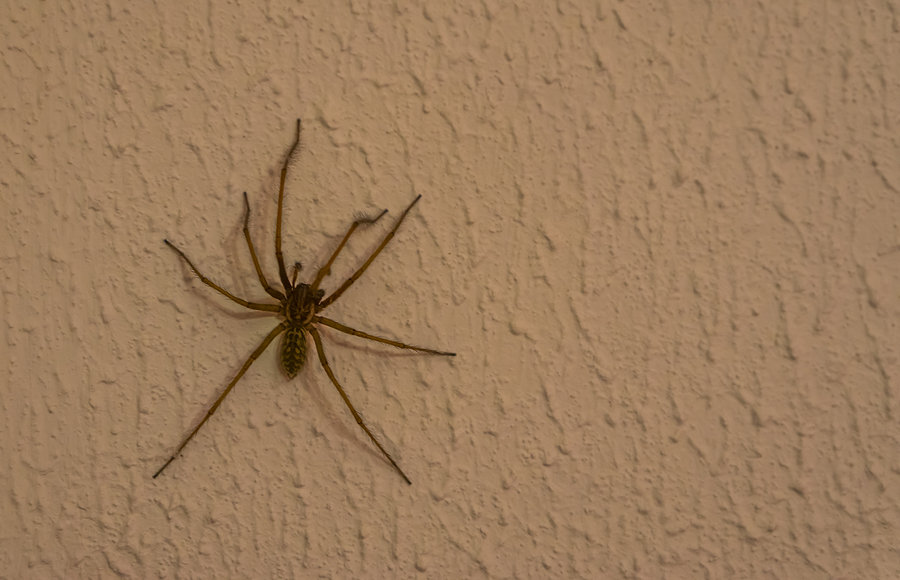
The common house spider gets its name from the fact that it is commonly found inside homes. These spiders are commonly found worldwide. They don’t pose a threat to humans and are more of a nuisance pest. Their webs in your home are the biggest issue they cause. Female house spiders grow from 3/16″ to 5/16″ in length while males range from 1/8″ to 3/16″. They are yellowish-brown in color with dirty white abdomens and dark stripes that meet at an angle.
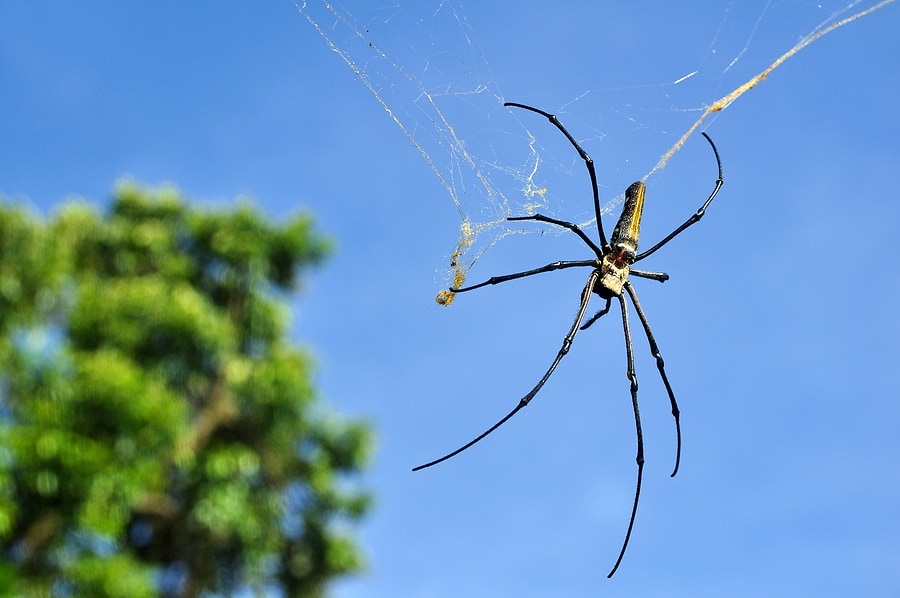
Orb weaver spiders are named for the orb-shaped webs they create. There are over 2800 species of these spiders worldwide. Adults range in size from 1/2″ to 1″. Their coloring varies greatly among species; they are mostly reddish-brown to gray but some varieties are a vibrant yellow color. Because there is such variation among species, the best way to identify an orb weaver is by it’s large, circular, wagon-wheel shaped web. Orb weavers don’t pose any threats to humans but their large webs can be problematic around your home.
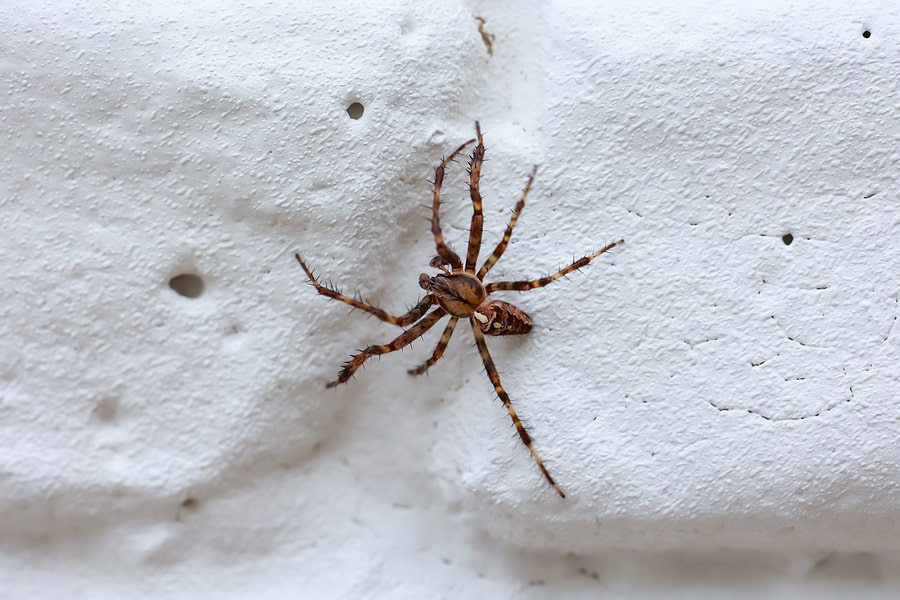
The crevice spider, also known as the southern house spider, are commonly found in the southeastern United States. They are often mistaken for brown recluse spiders. They range in size from 1/2″ to 3/4″. Males are usually brown or amber in color while females are black or gray and resemble tarantulas. They prefer to build their webs at higher elevations and are usually found on the outside of houses, outbuildings, and barns. They are known to crawl across anything in their path, including humans! They do not pose a threat to humans, however.
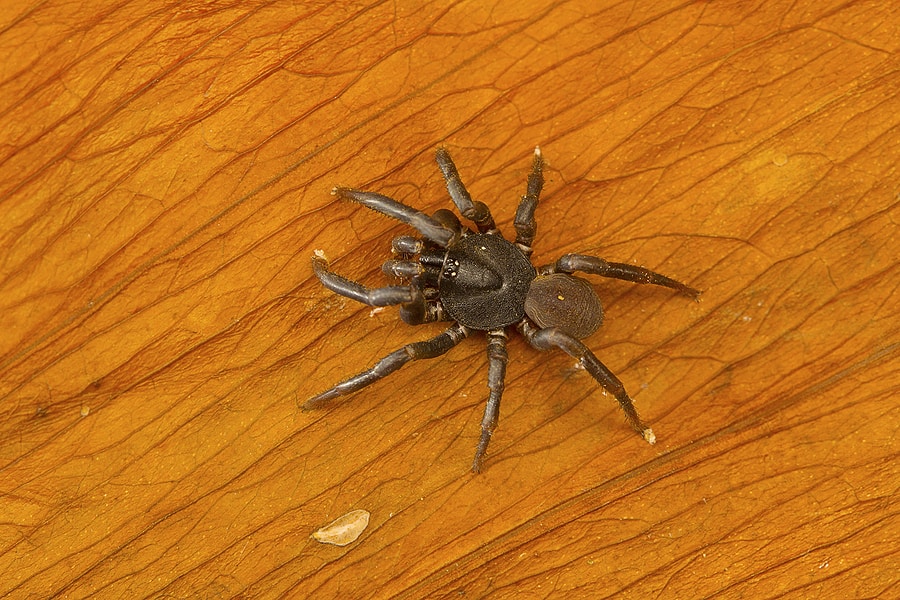
The trapdoor spider is a large, hairy spider that can range in color from yellowish brown to reddish brown to black. They have powerful jaws and sharp fangs. Trapdoor spiders get their name from the burrows they construct with a cork-like trapdoor made of soil, vegetation and silk. They spend most of their lives underground and usually hunt at night. Trapdoor spiders are not aggressive and, in fact, are often timid when confronted. They can bite but this is rare. They do not pose a significant threat to humans.
Once you’ve identified the spider(s) you have around your home, the next step is preventing them. You can prevent spiders by:
Fall Spider Identification Guide
American Cockroaches: How To Identify and Prevent
Are Mosquitoes Still Active in the Fall?
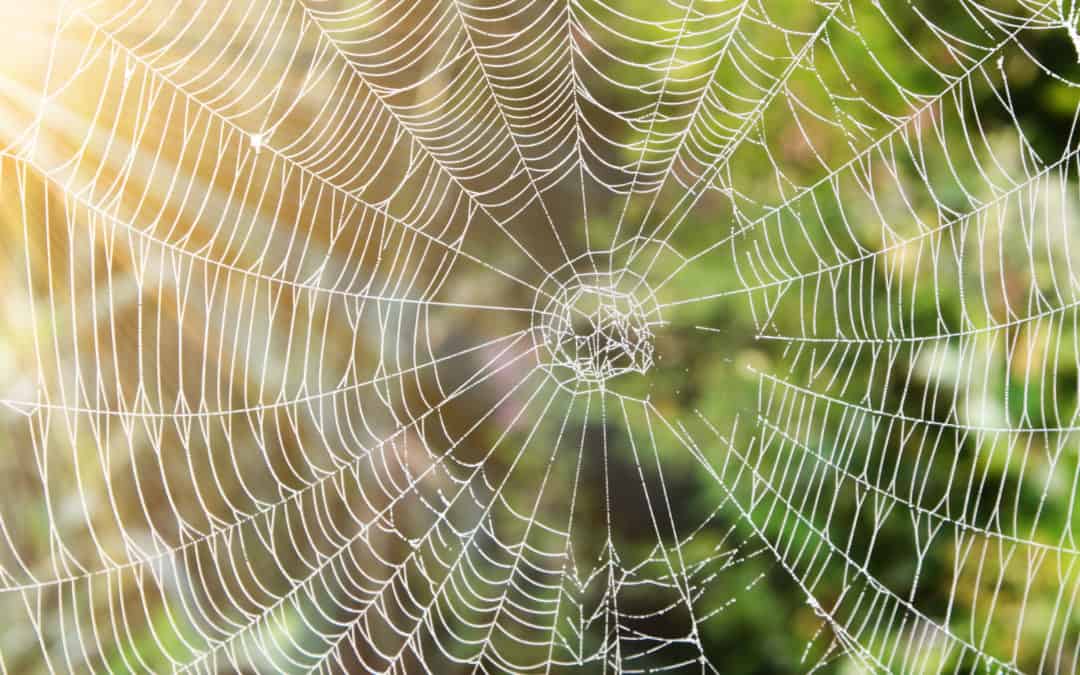
The climate of Georgia (and the southern United States in general) provide the ideal environment for several species of spiders. The humidity and subtropical conditions provide just the right setting for these pests to thrive. Almost all species of spiders found in the United States pose no threat to humans. In fact, of the 38 known species of spiders in Georgia, only 2 are harmful to humans. Here are 10 of the most common spiders found in Georgia and the threat they may pose to you and your family.
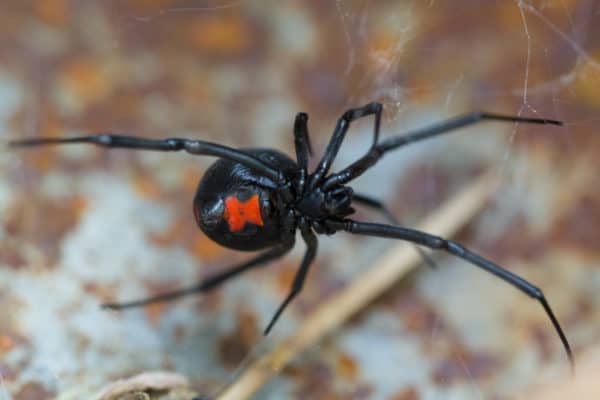
Black widow spiders are black and shiny in color with a prominent red hourglass shape on their back. They are most often found around woodpiles and can easily access your home by hitching a ride inside on your firewood. They are also found in common places around your home where they can be undisturbed like eaves, empty boxes, and even shoes that are stored away and never worn. Black widows can be harmful to humans if bitten. While males rarely bite, females have been known to be aggressive especially when they are guarding their eggs. Black widow bite symptoms include fever, elevated blood pressure, nausea, and sweats. Death is uncommon after a black widow bite, especially if treatment is received quickly. In fact, there has not been a black widow related death in the United States in over 10 years.
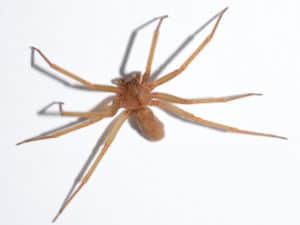
Brown recluse spiders are light to dark brown in color (hence their name) with a signature dark brown violin shape on their backs. They are commonly found outdoors in debris and woodpiles. If they are found indoors, they are usually found underneath furniture, inside storage bins, and in dark recesses like baseboards. They are often found hiding out in closets, attics, and crawlspaces. Brown recluse spiders will bite when on the defensive. These bites are very painful and often leave an open, ulcerating sore that must be treated by a medical professional. Other symptoms include fever, restlessness, and difficulty sleeping.
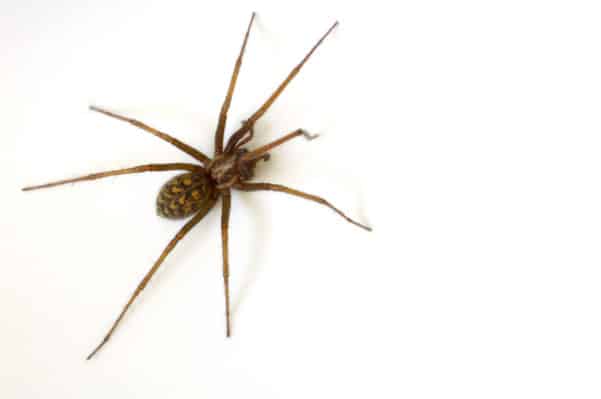
House spiders vary in color but most are yellow to brown in color with elongated abdomens. They are most often found inside homes (hence their name) usually in ceiling corners, under furniture, and inside closets, basements, garages, and crawlspaces. When outdoors, they are often found around windows, under eaves, and near light sources. While they can be a nuisance to have in your home, they don’t pose any threat to humans. Because of the low humidity and fewer insects in modern homes, house spiders are becoming less common in houses and more likely to be found in garages, sheds, barns, and warehouses.
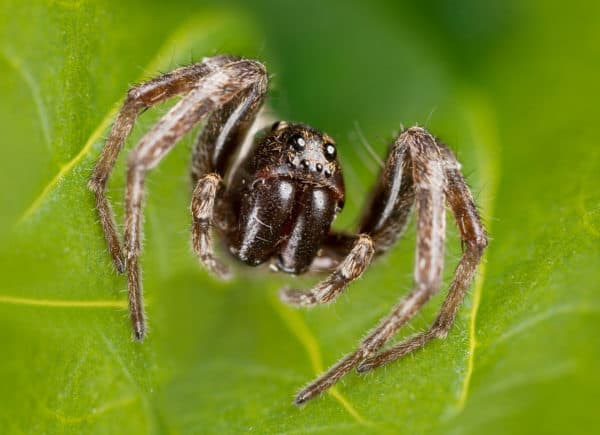
Wolf spiders are typically dark brown in color with pale markings or stripes. Their legs are long and spiny and most have hair on their bodies. When indoors, wolf spiders typically stay on or near the floor, especially along walls and under furniture. They often come inside on firewood. When found outside they are usually found under firewood piles, leaves, yard debris, and stones and will often hide in these places during the day. While wolf spiders can bite, these incidents are rare and they don’t pose a significant threat to humans. Wolf spiders are unique in that they don’t capture their prey in webs but rather by chasing them down using their speed.
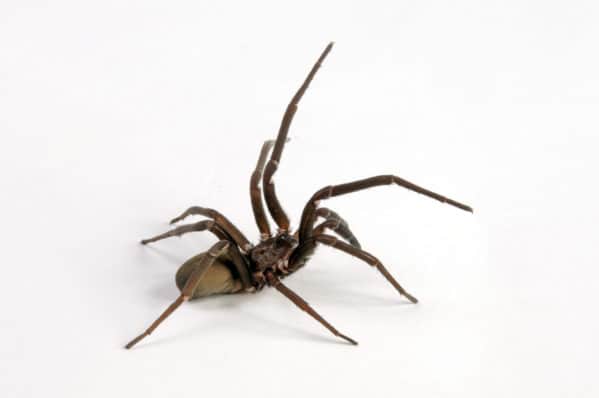
Crevice spiders have similar shapes and coloring as brown recluse spiders and are, in fact, often mistaken for them. While they do have the same light to dark brown coloring and similar body shape, they do not have the signature violin-shaped markings that the brown recluse has. They are often found in corners and crevices which is where their name comes from, typically located in ceiling corners, along baseboards, and in window frames. They can be beneficial to homeowners as they eat common household pests like flies, roaches, beetles, and wasps. While they can bite if threatened, this is very rare and they do not pose a significant threat to humans.
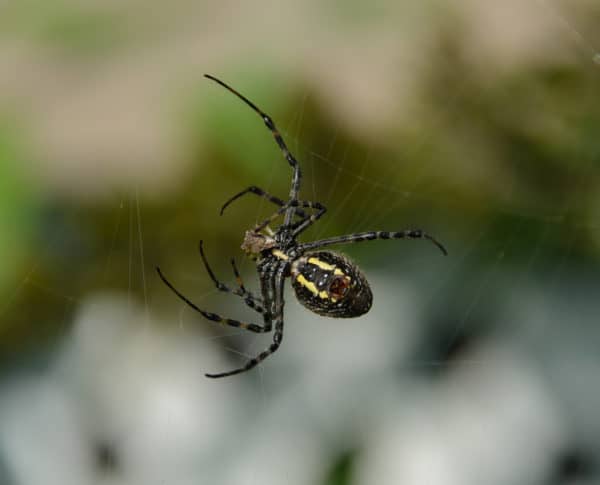
The yellow garden spider is a large, black and yellow spider that is known for spinning large circular webs. Females are black with bright yellow patches on their abdomens. Males are smaller with less yellow coloring on their abdomens. They are typically found outdoors in sunny areas with plants on which they can anchor their webs (hence their name). Garden spiders don’t pose a threat to humans (other than the chance of walking through their sometimes significantly large webs) but they do produce venom that is harmless to humans, but helps to immobilize prey like flies, bees, and other flying insects that are caught in the web.
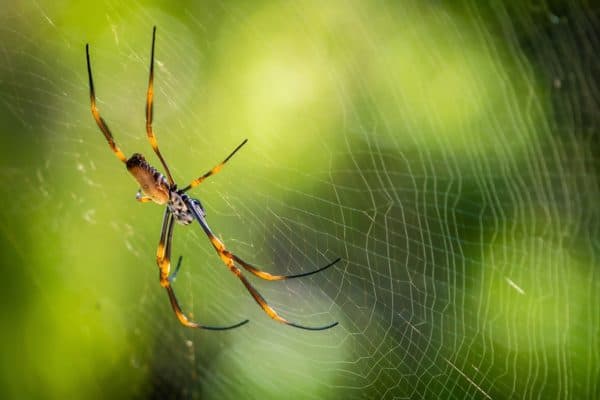
Orb weaver spiders can vary in size and coloring but are often mistaken for brown recluse spiders. They are known for creating distinctive sheet webs with an escape tunnel at the rear. These webs can be up to 3 feet in diameter. Many orb weavers are brightly colored, have hairy or spiny legs and a relatively large abdomen. Orb weavers are typically nocturnal spiders and many species will build or do repair work on their webs at night. Orb weavers do not pose a threat to humans. They will bite if cornered but the bite is comparable to a bee sting.
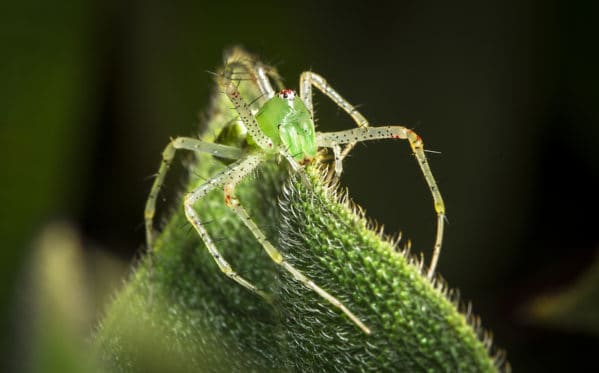
The lynx spider is bright green in color, resembling the color of a plant leaf. They will also sometimes have orange on their legs and black dots, as well. Their legs are covered in long black spines. They are very quick in movement and are able to jump large distances to capture their prey. They are often found in open fields, especially those with tall grass surroundings. The lynx spider can be quite useful in agricultural management. They will bite if on the defensive but they do not pose a significant threat to humans.
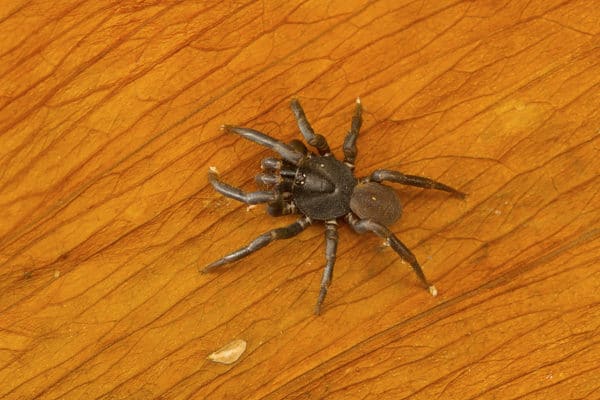
The trapdoor spider is a large, hairy spider that can range in color from yellowish brown to reddish brown to black. They have powerful jaws and sharp fangs. Trapdoor spiders get their name from the burrows they construct with a cork-like trapdoor made of soil, vegetation and silk. They spend most of their lives underground and usually hunt at night. Trapdoor spiders are not aggressive and, in fact, are often timid when confronted. They can bite but this is rare. They do not pose a significant threat to humans.
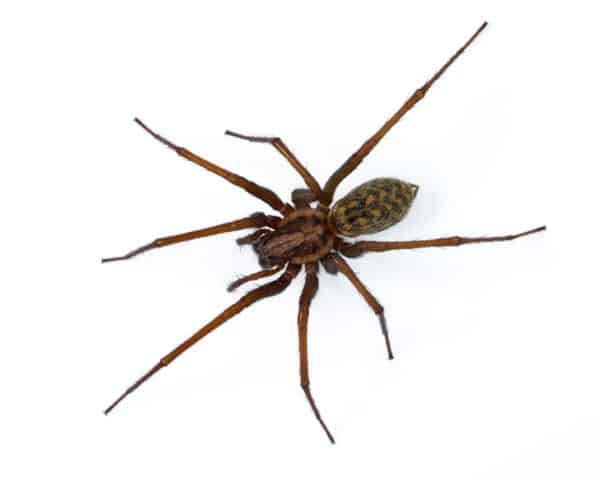
The hobo spider is light to medium brown in color with a down the center with an oblong abdomen. Hobo spiders build funnel webs that open at both ends with one end expanding outward into a broad, slightly curved sheet. Mating season is from June to October and the wandering of males in search of a mate brings them in to much more contact with humans than females. Therefore, male hobo spiders are responsible for more bites than females because of this increased contact with humans. Their bites, however, do not pose a significant threat to humans. Hobo spiders can be found in almost any habitat. They are commonly found in places with holes, cracks, or crevices. They are terrible climbers and are rarely found above ground level. They prefer dark, moist environments like basements, crawlspaces, and window wells.
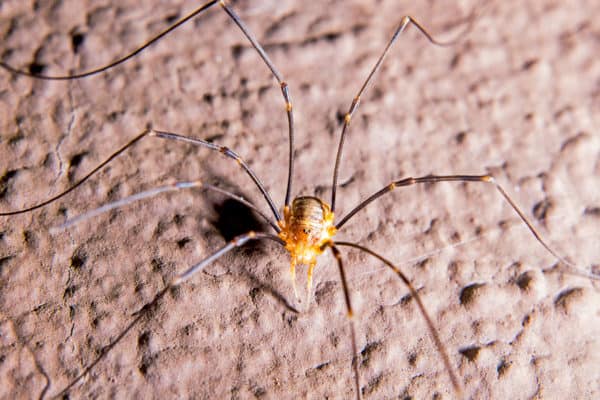
Contrary to popular belief, Granddaddy Longlegs are not, in fact, spiders; they actually belong to a group of arachnids known as harvesters or harvestmen. The predominant feature of harvesters including the granddaddy longlegs is legs that are exceptionally long in relation to their body size. Harvesters are usually seen around harvest time – hence their name. Just in North America alone there are about 150 species of granddaddy longlegs. They use their extremely long legs to catch their prey rather than building webs. Granddaddy longlegs are not poisonous or venomous and do not pose any threat to humans.
Whether they are dangerous to humans or not, most people would prefer to keep spiders out of their homes as much as possible. The best way to prevent spiders from taking up residence in your house is to get rid of any areas where they can hide. Spiders are more common in the fall and winter as they make their way indoors in search of food and warmth. Keep your garage, attic, and basement clear and decluttered. Try not to leave shoes and clothing on the floor. Seal any cracks and crevices around your home. Consider enclosing your crawlspace and sweep down any cobwebs that appear. As always, if you suspect you have a spider problem, contact a professional pest control company who can help identify the type of spiders you have and provide you with a thorough evaluation and treatment and prevention plan.
How Much Damage Can Termites Really Cause?